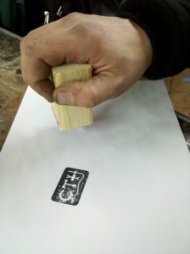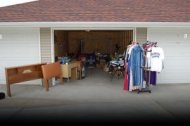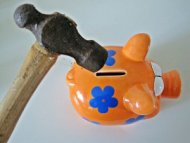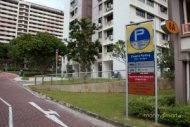insight
工程技术,地产投资,信仰家园,时尚生活Back in ’07, house flipping was the express train to Moneyville. Stock brokers were flipping houses. Pensioners were flipping houses. My dog groomer, whose property knowledge doesn’t extend beyond 72 ways to de-stain a carpet, was flipping houses. Then came the government measures, which derailed the gravy train faster than a budget rail worker. But even with new regulations, is successful house flipping possible? I find out:

I am a very experienced house flipper.
What is House Flipping?
Flipping is when someone buys a house, then attempts to quickly re-sell it for profit. While typical property investors wait years for property values to rise, a house flipper re-sells in weeks.
A house flipper secures the option to purchase (OTP), then transfers the OTP to a buyer who is offering a higher price. For example:
- A house flipper offers to buy a house for $1,000,000.
- The house flipper secures the OTP at $1,000,000. This costs 1% of the price ($10,000)
- The house flipper finds a buyer who offers $1,020,000 for the house.
- The house flipper transfers the OTP to said buyer. The excess $20,000, minus any legal fees, is the house flipper’s profit.
(And yes, the eventual buyer pays back the 1%).
But wait, isn’t there a Seller’s Stamp Duty? Yes, and a house flipper can bypass this:

Satay? Ba Chang? District 9 OTP?
Seller’s Stamp Duty
Since 2011, the government has attempted to discourage flipping. This is done through the seller’s stamp duty (SSD). When you sell a property within the first four years of the purchase, the SSD applies as follows:
- First Year – 16% (of price or value, whichever is higher)
- Second Year – 12%
- Third Year – 8%
- Fourth Year – 4%
The SSD must be paid within 14 days once the OTP is exercised. As such, it is the eventual buyer who must exercise the OTP, not the house flipper.
I can’t stress this enough: If you exercise the OTP, you’ve bought the house. You will incur the SSD upon trying to sell it.

16% when I stamp it? What happens if I stamp it a few more times? HA HA!
The OTP’s Shelf Life
The cost of the OTP is 1% of the price. So the OTP of a $1,000,000 house is $10,000. This must be paid out of the house flipper’s pocket.
In order to flip, the OTP must also contain the words “…and/or nominees” next to where the house flipper’s name appears.
Once issued, the OTP lasts about 14 to 30 days. The more urgently the seller needs the money, the shorter the given time. Within this duration, the house flipper must find a buyer to transfer the OTP to. Otherwise, the house flipper must either exercise the option himself (buy the house) or forfeit the 1%.
Sounds tough?
It is. But there are still ways you can perform a successful house flip:
- Take Advantage of Fire Sales
- Flip During an Up Market
- Flip When You Have Deep Pockets
- Flip Properties With Scarcity Value
* There is also another type of house flipping, which involves the transfer of the title instead of the purchase option. I will discuss this in a future article. Like us on Facebook to get updates!
1. Take Advantage of Fire Sales

Are you saying we can only fire sale stuff we own? I hope the neighbours have a sense of humour.
Fire sales refer to situations when a property is sold below market value. This is usually the result of forced foreclosure by a bank.
Properties in a fire sale are sold below their actual market value. A house flipper could secure the OTP at the lower price, then transfer it to a buyer willing to pay market rates.
Watch out for outsized risks: If a property is going for $995,000, and the market value is $1,000,000, the risk is steep. The 1% OTP is $9,950, which outweighs the potential $5000 profit.
2. Flip During an Up Market
Kelvin Daud, who has flipped two properties, times his decisions according to the property market:
“I watch for changes in the residential property price index. If the index rises by at least 2% – 3% between one quarter and the next, I might consider making a flip.
…you cannot flip when the bubble has just burst; that’s the danger.”
Kelvin stresses the dangers of attempting a “down market flip”. He mentions that, in a situation where buyers are waiting for the market to bottom out, it can be hard to find a good buyer in 14 days.
In general, ensure that you attempt flips when the property market is resting, or on an uptrend. Never try to flip when prices are going down.
3. Flip When You Have Deep Pockets

If you have a bludgeoning object, I have cash reserves.
The biggest problem with flipping is the 1% paid for the OTP.
The simplest way around this is to have cash reserves when you flip. Should you fail to secure your buyer in 14 to 30 days, you can just buy the property yourself. You can then treat your purchase as a regular property investment; drop by sites like SmartLoans.sg, and get the cheapest home loan to reduce your costs.
Hey, if you got it in a fire sale or something, it’s still a good price isn’t it?
Alternatively, your bank account may be so substantial that the 1% is irrelevant to you.
Property investor Charlie Sng didn’t think so:
“I bought a property with the intent to flip. My buyer backed out at the last minute, because he unexpectedly got divorced and wanted to settle proceedings first.
Rather than forfeit the 1%, which was around $12,000, I went ahead and bought the property for myself. Today its value has appreciated, so I have no regrets. But if I had very limited capital, I would have cried about that $12,000.”
4. Find Properties With Scarcity Value

You think $50,000 extra is steep, but this place is rare ok? The parking lot has a lot of shade!
There are opportunities to flip besides fire sales. One of these is when especially scarce property appears on the market. An example would be a unit in a desirable condo, which is otherwise sold out.
How can you tell when a property is scarce? A lot of homework. It involves knowing the district inside out, and tracking the property market every day. And frankly, if you’re not doing this, you won’t be one who spots that scarce property when it goes up for sale.
Charlie Sng says:
“Make sure there are no properties nearby that are too similar. For example, in Punggol right now, there are several new developments that are close to the upcoming mall. More than one such development is within walking distance.
This removes urgency in buying any specific unit just because it’s close to the mall. I think you would be hard pressed to flip a property under such conditions.”
Is It Worth Trying?

Risk assessment: Like an extreme sport for mathematicians.
If you have the money and the contacts, it’s worth trying to flip some properties. Hey, it’s fast money. But for those who can’t afford to forfeit the OTP, don’t even try.
Likewise, flipping is not for people who lack contacts in the property market. 14 – 30 days is a very short time in which to sell a house. You should have five or six prospects lined up even before you get the OTP; if you don’t, just put it down and back off.





